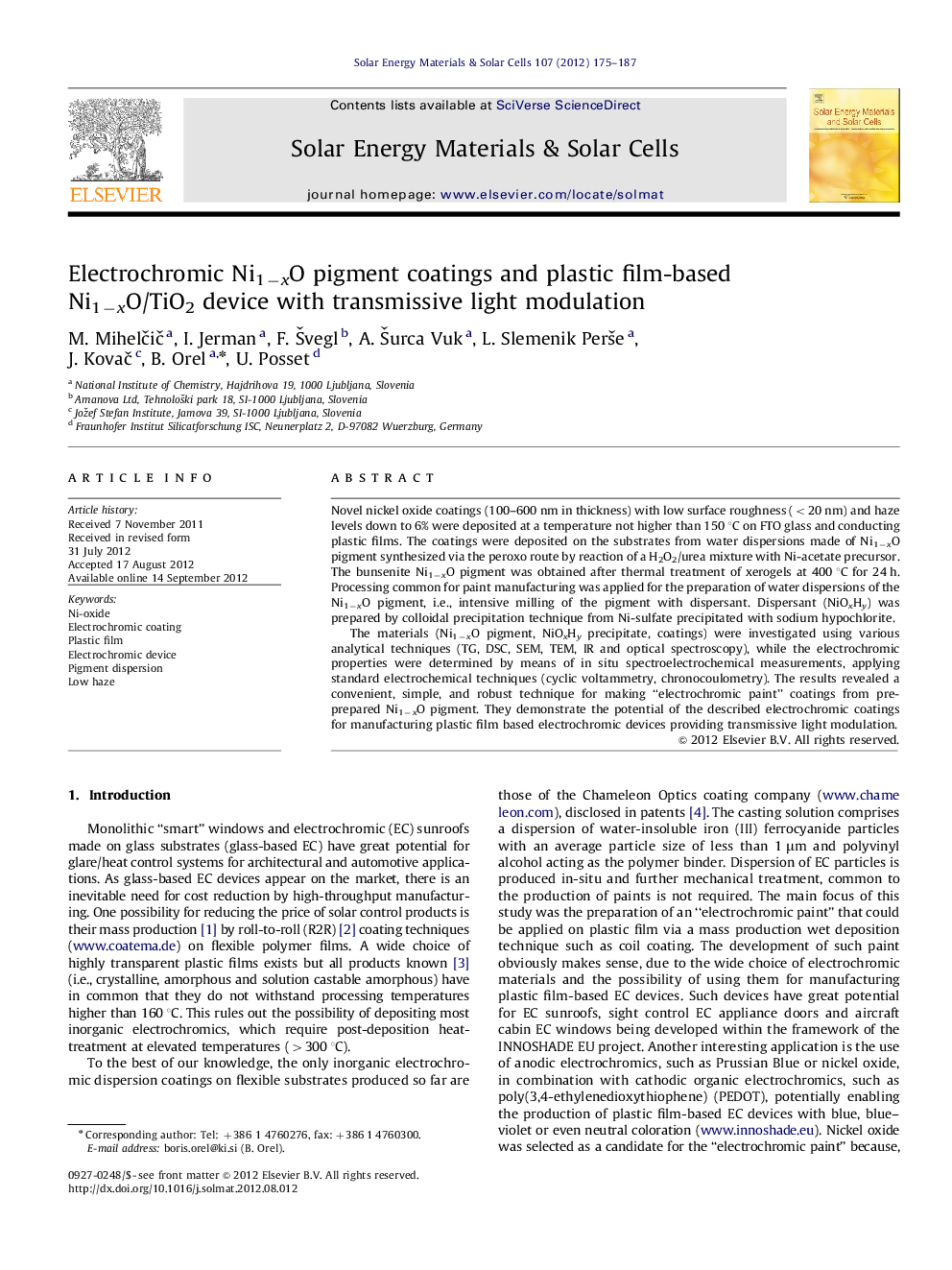| Article ID | Journal | Published Year | Pages | File Type |
|---|---|---|---|---|
| 78906 | Solar Energy Materials and Solar Cells | 2012 | 13 Pages |
Novel nickel oxide coatings (100–600 nm in thickness) with low surface roughness (<20 nm) and haze levels down to 6% were deposited at a temperature not higher than 150 °C on FTO glass and conducting plastic films. The coatings were deposited on the substrates from water dispersions made of Ni1−xO pigment synthesized via the peroxo route by reaction of a H2O2/urea mixture with Ni-acetate precursor. The bunsenite Ni1−xO pigment was obtained after thermal treatment of xerogels at 400 °C for 24 h. Processing common for paint manufacturing was applied for the preparation of water dispersions of the Ni1−xO pigment, i.e., intensive milling of the pigment with dispersant. Dispersant (NiOxHy) was prepared by colloidal precipitation technique from Ni-sulfate precipitated with sodium hypochlorite.The materials (Ni1−xO pigment, NiOxHy precipitate, coatings) were investigated using various analytical techniques (TG, DSC, SEM, TEM, IR and optical spectroscopy), while the electrochromic properties were determined by means of in situ spectroelectrochemical measurements, applying standard electrochemical techniques (cyclic voltammetry, chronocoulometry). The results revealed a convenient, simple, and robust technique for making “electrochromic paint” coatings from pre-prepared Ni1−xO pigment. They demonstrate the potential of the described electrochromic coatings for manufacturing plastic film based electrochromic devices providing transmissive light modulation.
Graphical abstractFigure optionsDownload full-size imageDownload as PowerPoint slideHighlights► Electrochromic coatings were deposited from N1−xO pigment/NiOxHy dispersion. ► Low temperature curing enabled the deposition of pigment coatings on conducting films. ► Plastic film EC device was made from TiO2/PVC membrane electrolyte/N1−xO coatings.
